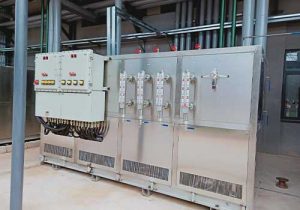heat and cooling system
Introduction to Heat and Cooling Systems
Heat and cooling systems are essential in controlling temperatures in residential, commercial, and industrial settings. These systems can be powered by various energy sources and employ different technologies to either heat or cool spaces as required. The efficiency and performance of these systems have a significant impact on energy consumption and environmental sustainability.

Principles of Heat and Cooling Systems
The basic principle behind heat and cooling systems is the transfer of thermal energy. Heating systems generate heat through combustion, electrical resistance, or absorption of heat from the environment, while cooling systems remove heat from an area and transfer it outside. These systems can operate on principles such as convection, conduction, and radiation.
Types of Heat and Cooling Systems
There are several types of heat and cooling systems, each with unique characteristics:
HVAC Systems: These are the most common systems used in buildings for heating, ventilation, and air conditioning.
Heat Pumps: These systems transfer heat from a cooler space to a warmer space, providing both heating and cooling capabilities.

Combined Heat and Power (CHP) Systems: Also known as cogeneration, these systems produce electricity and useful heat simultaneously.
Absorption Chillers: These chillers use heat to drive a refrigeration cycle, often used for cooling in large buildings.
Applications of Heat and Cooling Systems
Heat and cooling systems are used in a wide range of applications:
Residential Buildings: For maintaining comfortable living conditions.
Commercial Buildings: In offices, malls, and other commercial spaces for climate control.
Industrial Processes: For temperature control in manufacturing processes, such as food processing and chemical production.
Data Centers: To maintain optimal operating temperatures for servers and IT equipment.
Efficiency of Heat and Cooling Systems
The efficiency of heat and cooling systems is a critical factor in energy consumption. High-efficiency systems can significantly reduce energy use and costs. Recent developments in zero-energy buildings have focused on improving the energy efficiency of these systems through the use of renewable energy technologies, such as solar energy installations, wind turbines, and geothermal heat exchangers.

Safety of Heat and Cooling Systems
Safety is a paramount concern in the design and operation of heat and cooling systems. Proper maintenance, regular inspections, and adherence to safety standards are essential to prevent accidents, such as fires or carbon monoxide poisoning. The use of smart controls and advanced diagnostics can enhance the safety of these systems.
Market Trends in Heat and Cooling Systems
The market for heat and cooling systems is evolving with a focus on energy efficiency and sustainability. There is a growing trend towards the use of renewable energy sources and hybrid systems that can respond flexibly to changing energy demands. The integration of heat recovery systems and absorption chillers is also becoming more common, as they offer significant energy savings.
Latest Advancements in Heat and Cooling Systems
Recent advancements in heat and cooling systems include the development of more efficient heat pumps, the use of phase change materials for thermal storage, and the integration of smart controls for optimal system performance. The concept of zero-energy buildings has become more realistic with the push towards renewable and diversified energy sources.
Conclusion
Heat and cooling systems are fundamental to modern living and industry, and their efficiency and safety are of utmost importance. As technology advances, there is a growing focus on renewable energy integration and hybrid systems that can provide more sustainable and efficient solutions. Understanding the latest trends and advancements in heat and cooling systems is crucial for making informed decisions that can lead to energy savings and environmental benefits.
Related recommendations
chiller 4 kw
458Understanding the Pricing of 4 kW Water Chillers Water chillers are essential for maintaining optimal temperatures in various applications, including industrial processes, medical equipment coo...
View detailsRefrigeration Principle, Accessories and Application of Chiller
1162Refrigeration Principle, Accessories and Application of Chiller The industrial chiller operation system is composed of four basic components: compressor, evaporator, condenser and expansion ...
View detailsair cooled and water cooled
812Introduction to Air-Cooled and Water-Cooled Chillers Chillers are essential in various industrial and commercial facilities for providing cooling to processes, equipment, and spaces. When selec...
View detailsindustrial water chiller singapore
526Industrial Water Chiller Systems in Singapore: Market Growth and Sustainability Industrial water chiller systems are critical components in Singapore's industrial sector, providing essential co...
View details
 LNEYA Chiller
LNEYA Chiller







HelloPlease log in